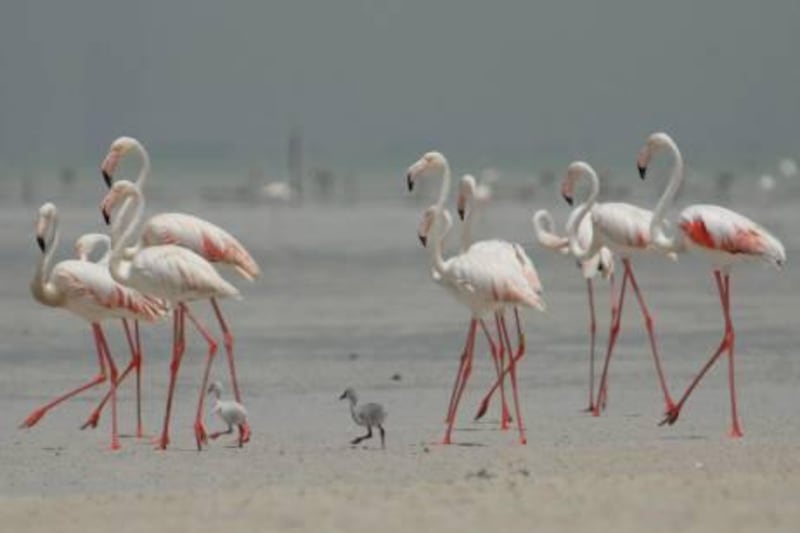ABU DHABI // Flamingos are breeding in Abu Dhabi's Al Wathba Wetland Reserve for the first time in almost a decade.
Video:Tracking Flamingos in Abu Dhabi
The Environment Agency Abu Dhabi captured and tracked its 15th Flamingo as part of ongoing conservation efforts earlier this year.
Established in 1998, the protected area is home to almost 1,600 Greater Flamingos.
In routine monitoring of the reserve, scientists at the Environment Agency - Abu Dhabi (Ead) recorded the presence of 90 chicks.
More are expected to hatch in the coming days, the agency said yesterday.
The Greater Flamingo is the largest of all flamingo species, standing up to 150cm tall.
It has a long, slender neck and plumage that goes from white to pinkish in colour. The pink colour of the plumage comes from substances in their food.
In contrast to their brightly coloured parents, the chicks are usually grey.
Because of its broad distribution, the Greater Flamingo is not considered threatened globally. Its numbers in the UAE are also considered healthy, although many of its wetland habitats are under threat from development.
"The breeding by flamingos in this reserve is further evidence that protecting such areas is crucial in the preservation of our biodiversity," said Razan Al Mubarak, the secretary general of Ead.
Flamingos are known to breed in Shahama and in Bul Sayeef, a protected area. Both are in Abu Dhabi but the colonies also depend on wetlands in Dubai, Ras al Khaimah and Umm al Qaiwain to survive. Flamingos travel the length of the coastline in search of food.
Ead reported last week that four of the country's most important wetlands are under threat from development: Bul Sayeef in Abu Dhabi; Ras al Khor in Dubai; Khor al Beidah in Umm al Qaiwain; and Khor al Khawair in Ras al Khaimah. They are all important feeding grounds for the Greater Flamingo and many other species of waterbirds.





